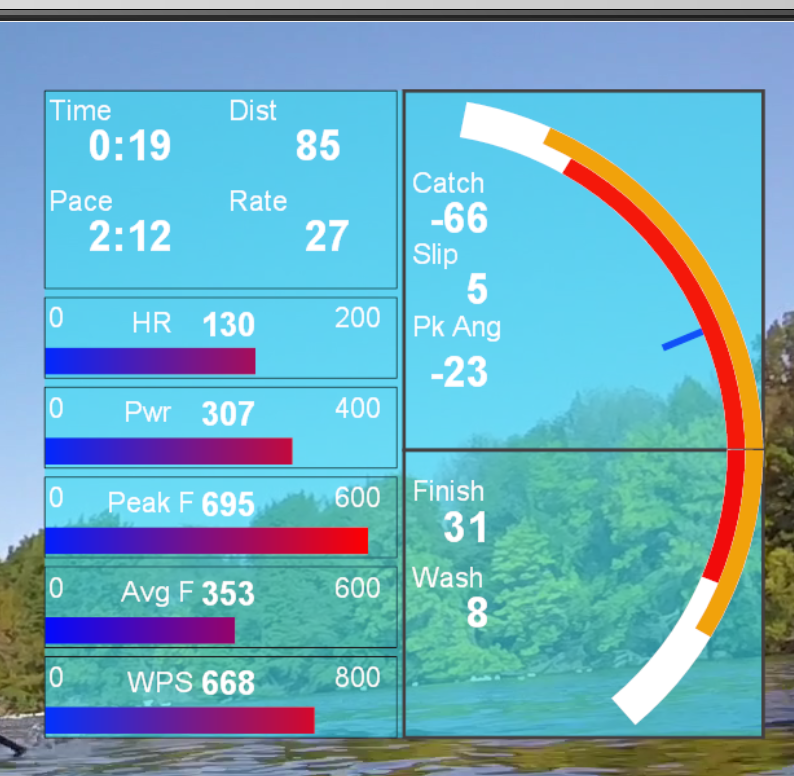
Previously, Sander posted an article about embedding Empower Data into a video.
The basics of embedding data in a video is.
- record a video of yourself rowing
- capture performance data using the Speedcoach GPS and Empower oarlock
- upload the data to rowsandall, then export it as a CSV file
- Use a software program called Dashware to merge the data and the video together (Windows only 🙁 )
- Dashware uses a “Data Profile” to interpret the exported CSV
- You include a “Gauge” in the video frame that uses the data that is filled by the data profile
- You use the editing tools to align the timing between the video and the performance data
- You publish a video that includes the telemetry
I wanted to take this a bit further. I wanted to include more parameters, and I wanted to come up with a graphical way to display parameters like total length and effective length since it can be tough to interpret changes in the data from a numerical display. I thought that a display like this could be very useful for remote coaching, self coaching and instructional purposes.
What data should be displayed? The Speedcoach and EmPower Oarlock generate a lot of data for each stroke. NK has done a good job defining all the terms on the EmPower website.
- Speedcoach Measurements
- Position (Latitude, Longitude)
- Pace (per 500m)
- Stroke rate
- Heart Rate (using a BT-LE HR sensor)
- Distance
- Elapsed Time
- Empower Oarlock Measurements
- Stroke Angle Measurements
- Catch Angle
- Slip
- Finish Angle
- Wash
- Total Length
- Effective Length
- Peak Force Angle
- Force and Power Measurements
- Peak Stroke Force
- Average Stroke Force
- Work Per Stroke
- Stroke Power
- Stroke Angle Measurements
I didn’t include a map view in the gauge because there are already map gauges in Dashware.
Some of the data is best understood in numerical form, because that is what you see on the speedcoach display. This includes time, distance, pace, and stroke rate.
For angle measurements, the display should accurately depict the actual angle through which the oar is swinging. Luckily, Dashware has a gauge element which is an arc. That was used to show catch, and catch minus slip as well as the finish and the finish minus wash. These are put together so the complete orange arc is the total length and the red arc if the effective length. A potential future enhancement is a numerical readout of these two parameters.
Heart rate is a bar graph from 0 to 200. If you are a hummingbird, you might need to change the upper limit on that one.
The Power, Peak Force, Average Force and Work Per Stroke gauges are all tuned to be about right for me. A more proficient (and powerful rower) will probably need to adjust the upper limits on these ones too.
This is what the result looks like.
To use this in your videos, you will need the data profile and gauge that I created. You can get them here: Rowsandall_Empower_Dashware.
If you try them out and have trouble, please post comments and I will do my best to help you out. Dashware is very cool software, but the learning curve is pretty steep. There are a bunch of good tutorials that you can get through google.

